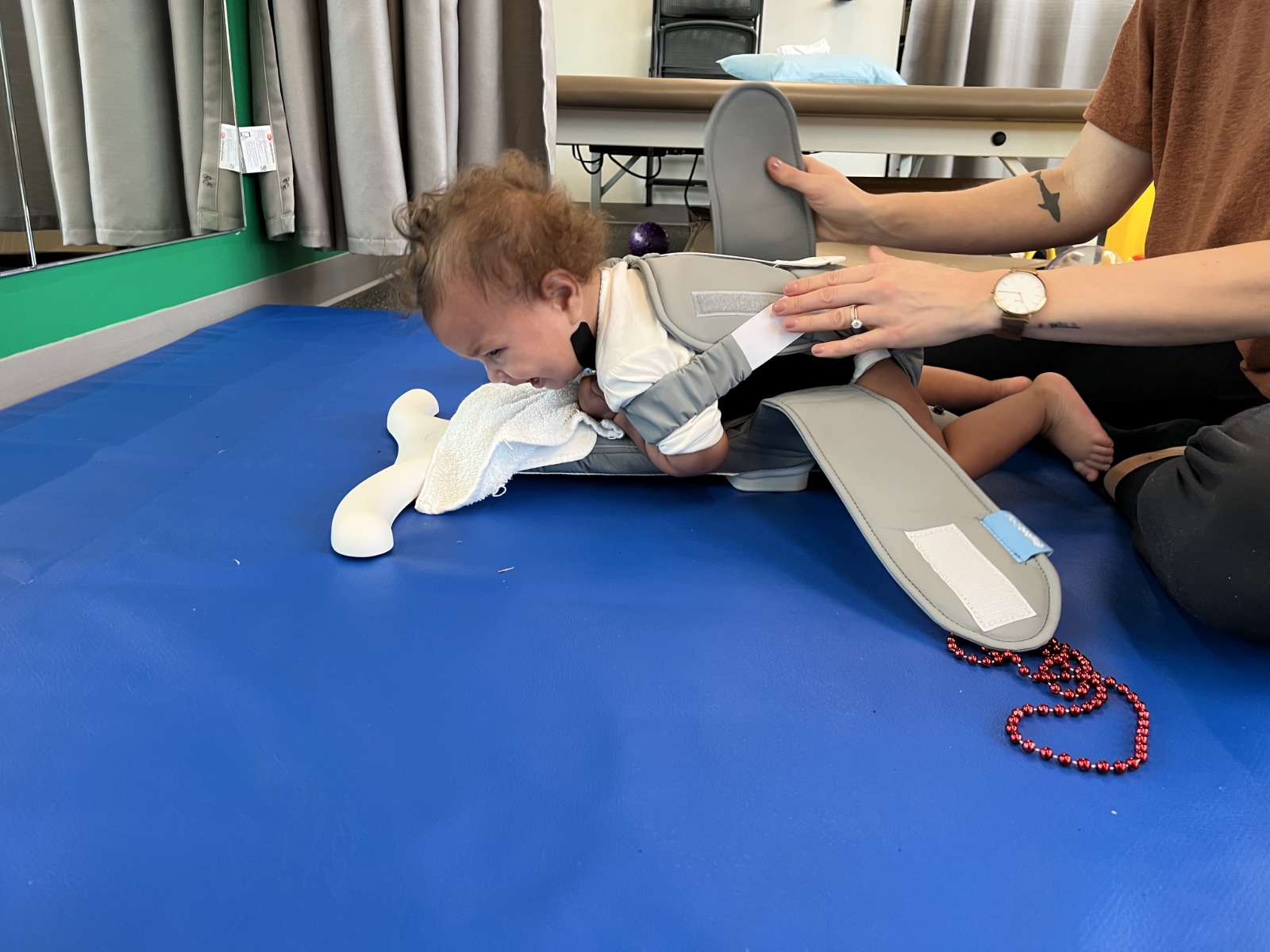Cookies and Privacy
Daytot processes information about your visit using cookies to improve site performance, facilitate social media sharing and offer advertising tailored to your interested.
By continuing to browse our site, you agree to the use of these cookies. For more information see our
Privacy & Cookie Policy.
The Importance of Early Mobility for Infants with or at High Risk for Neuromotor Impairments

As a neonatal physical therapist, I am lucky to get to work with babies right away. Sometimes the day after birth! This is as early as intervention can get. Often people ask me why babies need PT, and while this answer can go on and on, today I want to highlight the importance of early mobility for babies, especially those who are at risk for neuromotor impairments that impact movement, including cerebral palsy, Down syndrome, spina bifida, and many others!
Research tells us that early intervention leads to better outcomes for babies. Brain development occurs so rapidly during the first few years of life, so this is the perfect time for us to jump in to support functional movement patterns and enhance learning! Implementing strategies and interventions to optimize their early movement patterns helps set babies up for success for future skills as they grow. As pediatric PTs, we use many skills and treatment techniques to do this.
For example, I help babies achieve range of motion within functional ranges in their neck, trunk, arms, and legs so that they have the capability to reach, bend, extend, and move within an optimal capacity. This might happen through stretching, splinting and casting, with specific positioning techniques, and sometimes using massage!
Mobility is something we usually don’t attribute to babies. When talking about mobility, people generally think of crawling, walking, and running as important aspects to consider as babies get older. A typically developing baby may not start walking until somewhere between 12-18 months, but they work on mobility in smaller but just as important ways. For example, they start rolling around 6-9 months, preparing their neck and trunk muscles for bigger movements, and giving them important movement experiences. They might start crawling around 9-12 months as well, which opens up a world of exploration for them, providing them with agency, encouraging curiosity, and giving them their first taste of independence! All of these experiences come together, along with increasing leg and core strength, balance, and coordination, to lead them to walk eventually.
However, our babies with or at risk for neuromotor impairments may not get all of these opportunities in the same ways and with the same timeline. They may need help learning to roll and have limited independent mobility when it comes to crawling. This, in turn, not only can delay or limit walking skills, but also impacts their ability to explore, learn, grow, and develop a sense of independence.
This is where I come in, as a pediatric PT, and where you, as caregivers of littles can make a big impact! Starting early to give babies access to movement experiences, strengthening opportunities, supportive positions and a stimulating environment sets baby up for success as they continue to learn and grow. We use many tools to do this, and one of my favourite new ways to help babies experience early mobility is through the Daytot Joey Crawler!
I recently got my hands on the Joey after discovering it on social media and have been loving getting to trial it. For the past several months I have been exploring its many benefits, and seeing it work magic in clinic with babies!
Baby M is an awesome little 16-month-old who had a brain injury shortly after birth that resulted in significant movement challenges and muscle tone differences that have delayed her motor development and impacted her independent mobility. She is very curious and loves to play and interact, but her movement challenges make exploration difficult for her. We introduced the Daytot Joey to her about a month ago, and our first few sessions were dedicated to getting her used to the position and the movement. After all, it was all brand new to her, as she has been unable to crawl or roll on her own thus far.
Each time she used the Joey she showed important improvements. She lifted her head higher to see what was around her. She kicked her legs while attempting to move forward. She was less upset and more excited by the newfound movement and opportunities to explore the Joey has offered her!
Baby M took Joey home to use in her daily home program, and her mom sent me a video of her siblings helping her move in it. They were all interacting, laughing, and engaging. This is key. Movement and mobility–regardless of how it happens: crawling, walking, or wheeling– opens up a different world of opportunities for connection and learning. I recently attended a powerful lecture about shifting our views about mobility to see it as a human right that we all deserve to have access to. It has completely shifted my mindset about just how crucial mobility is. If we wait until kids are already delayed in crawling or walking to intervene, we have missed these critical windows of learning and growth.
All kids deserve to move. All kids deserve to play. And the earlier we intervene, the more successful they can be in achieving their goals. Tools like the Daytot Joey can help babies have access to this important human right, and can open up a world of exploration through early mobility!
Blogger Profile
Angela Fritz PT, DPT, PCS is a pediatric physical therapist in Seattle, WA who specializes in infant development. Angela currently work's at Seattle Children’s Hospital on the infant team, but has experience working with children 0-18 years of age. You can follow Angela on Socials @bebe__PT or at www.bebe-pt.com
